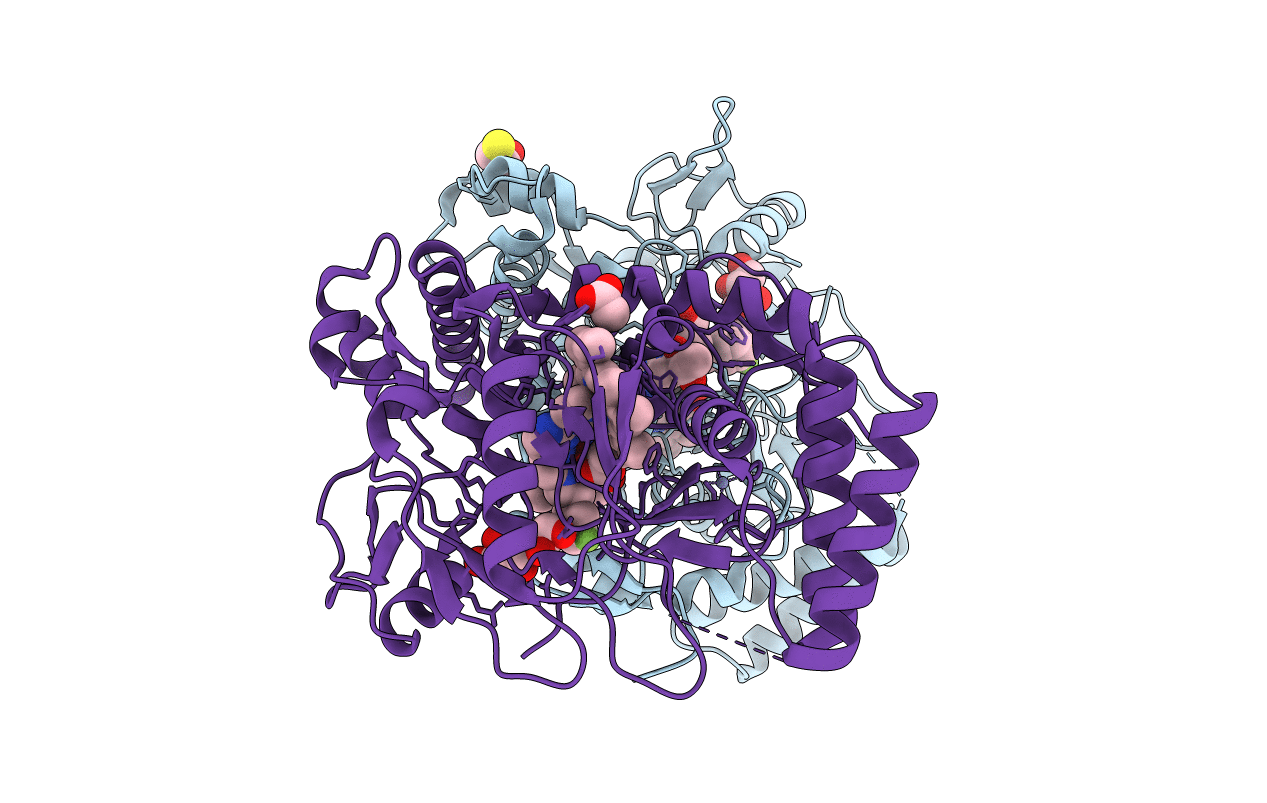
Deposition Date
2014-10-20
Release Date
2014-12-24
Last Version Date
2024-05-08
Entry Detail
PDB ID:
4D33
Keywords:
Title:
Structure of bovine endothelial nitric oxide synthase heme domain in complex with (N1-(2-(1H-imidazol-1-yl)pyrimidin-4-yl)-N2-(3- fluorophenethyl)ethane-1,2-diamine
Biological Source:
Source Organism:
BOS TAURUS (Taxon ID: 9913)
Host Organism:
Method Details:
Experimental Method:
Resolution:
2.09 Å
R-Value Free:
0.20
R-Value Work:
0.16
R-Value Observed:
0.16
Space Group:
P 21 21 21


